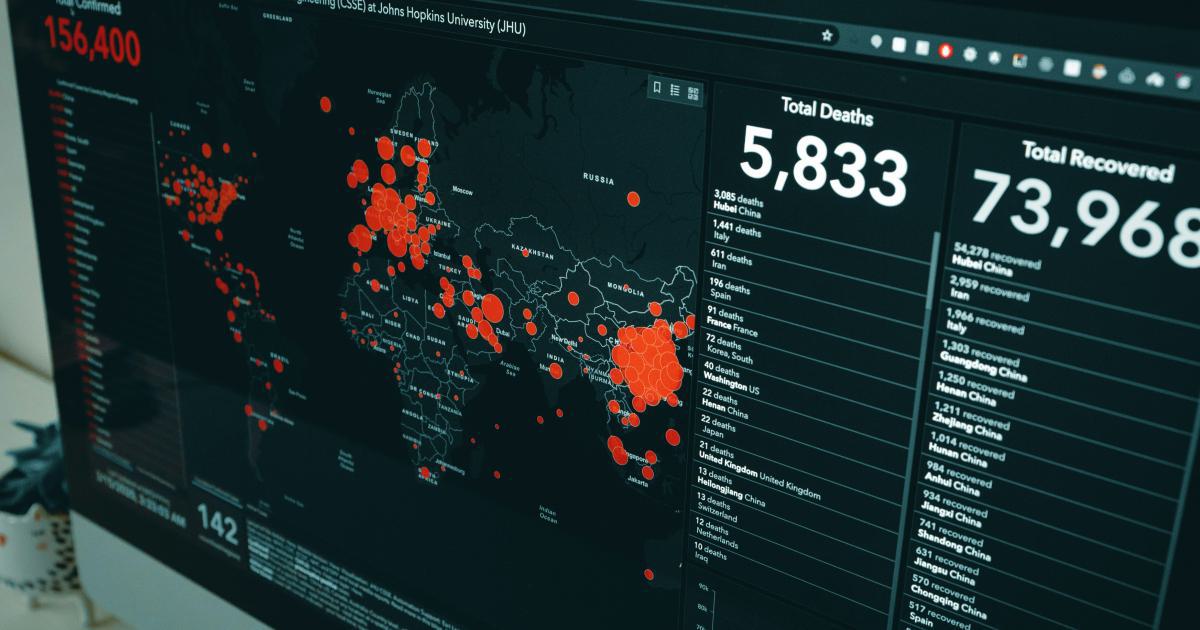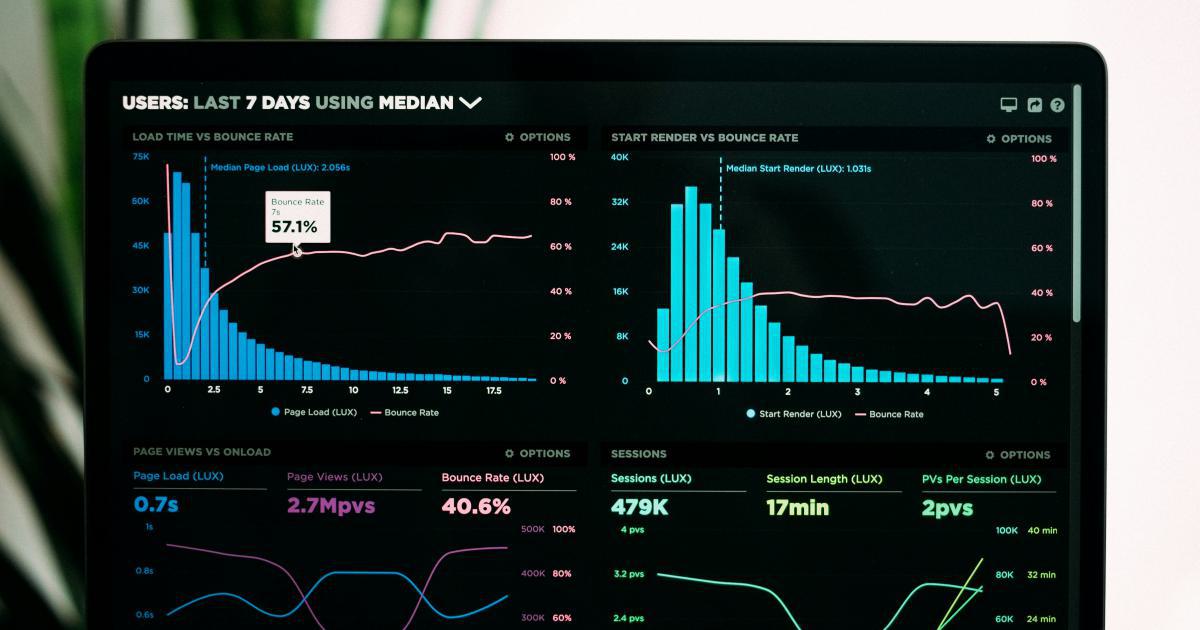Insider Secrets: Designing Data Visualizations That Truly Resonate


Understanding the Power of Data Visualization
Data visualization is a powerful tool that can transform complex information into meaningful and impactful stories. When done right, data visualizations have the ability to engage audiences, convey insights, and drive actionable decisions. However, creating effective data visualizations that truly resonate with your target audience is no easy feat. In this comprehensive article, we'll delve into the insider secrets and best practices for designing data visualizations that captivate and inspire.
The Importance of Effective Data Visualization
In today's data-driven world, the ability to communicate information visually has become increasingly crucial. Data visualization allows us to quickly and efficiently process large amounts of data, identify patterns and trends, and uncover insights that would otherwise be buried in spreadsheets or reports. By presenting data in a visually appealing and intuitive manner, we can enhance understanding, facilitate decision-making, and drive meaningful action.

Whether you're a business executive, a data analyst, or a designer, mastering the art of data visualization can have a significant impact on your ability to communicate effectively and make data-driven decisions. By understanding the principles of visual perception, color theory, and storytelling, you can create data visualizations that not only inform but also inspire and persuade your audience.
The Challenges of Designing Effective Data Visualizations
Crafting data visualizations that truly resonate with your audience is no easy task. There are several common challenges that designers and data analysts often face when creating effective data visualizations:
Complexity of Data: Dealing with large, multifaceted datasets can be overwhelming, making it challenging to identify the most relevant and impactful insights to showcase.
Audience Engagement: Capturing and maintaining the attention of your audience is crucial, but it can be difficult to strike the right balance between informative and engaging.
Visual Clarity: Ensuring that your data visualizations are clear, concise, and easy to understand requires a deep understanding of visual design principles and data visualization best practices.
Storytelling: Transforming raw data into a compelling narrative that resonates with your audience is a skill that takes time to develop and refine.
Customization and Adaptability: Every audience and use case is unique, requiring data visualizations that are tailored to specific needs and preferences.
To overcome these challenges and create data visualizations that truly resonate, we'll explore a comprehensive set of insider secrets and best practices in the following sections.
Mastering the Fundamentals of Effective Data Visualization
Before delving into the more advanced techniques, it's essential to establish a solid foundation in the fundamentals of effective data visualization. These core principles will serve as the building blocks for creating data visualizations that captivate and inform your audience.
Understanding Visual Perception
At the heart of effective data visualization lies a deep understanding of how our brains process and interpret visual information. By understanding the principles of visual perception, you can design data visualizations that are intuitive, easy to comprehend, and engaging.

Key visual perception principles to consider include:
- Gestalt Principles: These principles, such as proximity, similarity, and figure-ground, help us understand how people group and organize visual elements.
- Preattentive Processing: Certain visual attributes, like color, shape, and size, can be processed by the brain almost instantaneously, allowing for faster comprehension.
- Visual Hierarchy: Strategically arranging and emphasizing the most important information can guide the viewer's attention and enhance understanding.
Choosing the Right Visual Encoding
The choice of visual encoding, or the way data is represented graphically, can have a significant impact on the effectiveness of your data visualizations. Different chart types and visual representations are better suited for communicating specific types of data and insights.

Some of the most commonly used chart types for effective data visualization include:
- Line Charts: Ideal for displaying trends and patterns over time.
- Bar Charts: Effective for comparing values or categories.
- Scatter Plots: Useful for identifying relationships and correlations between variables.
- Pie Charts: Suitable for showing the proportional sizes of different categories.
- Histograms: Helpful for visualizing the distribution of a dataset.
When selecting the appropriate chart type, consider the nature of your data, the insights you want to convey, and the preferences and expectations of your target audience.
Leveraging Color Strategically
Color is a powerful tool in data visualization, as it can be used to highlight important information, create visual hierarchy, and evoke emotional responses. Mastering the principles of color theory and thoughtfully applying color to your data visualizations can significantly enhance their impact.

Key considerations when using color in data visualization include:
- Color Palettes: Choosing a cohesive and accessible color palette that aligns with your brand or the subject matter.
- Color Coding: Strategically using color to differentiate between data points, categories, or trends.
- Accessibility: Ensuring that your color choices are accessible for viewers with color vision deficiencies.
By understanding the fundamentals of visual perception, chart selection, and color theory, you'll be well on your way to creating data visualizations that captivate and inform your audience.
Crafting Compelling Data Narratives
Beyond the technical aspects of data visualization, the ability to tell a compelling story with your data is crucial for engaging and persuading your audience. Effective data visualization is not just about presenting information; it's about using data to craft a narrative that resonates with your viewers.
Identifying Meaningful Insights
The first step in creating a compelling data narrative is to identify the most meaningful and impactful insights within your data. This requires a deep understanding of your data, as well as the ability to recognize patterns, trends, and anomalies that can drive your storytelling.

When exploring your data, consider the following questions:
- What are the key takeaways or findings that stand out?
- What patterns or trends emerge that could be significant?
- What data points or relationships are unexpected or surprising?
- How do these insights relate to your audience's goals or pain points?
By focusing on the most compelling and relevant insights, you can begin to construct a narrative that will resonate with your viewers.
Structuring Your Narrative
Once you've identified the key insights, it's time to structure your data narrative in a way that captivates and guides your audience. Effective data storytelling follows a similar structure to a well-crafted story, with a clear beginning, middle, and end.

The three key components of a compelling data narrative are:
Introduction: Set the stage by providing context and establishing the relevance of your data to your audience.
Body: Dive into the core insights and findings, using data visualizations to support and enhance your narrative.
Conclusion: Summarize the key takeaways, highlight the implications, and inspire action or further exploration.
By structuring your data narrative in this way, you can guide your audience through a logical and engaging journey, leaving them with a clear understanding of the significance and impact of your data.
Incorporating Storytelling Techniques
To further enhance the impact of your data narrative, consider incorporating proven storytelling techniques. These techniques can help you create a more emotionally resonant and memorable experience for your audience.

Some effective storytelling techniques to incorporate include:
- Anecdotes and Case Studies: Bring your data to life by weaving in real-world examples or personal stories.
- Analogies and Metaphors: Use familiar concepts to help your audience better understand complex data points or relationships.
- Rhetorical Questions: Engage your audience by posing thought-provoking questions that encourage reflection and deeper understanding.
- Emotional Appeals: Tap into your audience's emotions by highlighting the human impact or implications of your data insights.
By blending data-driven insights with compelling storytelling techniques, you can create data visualizations that not only inform but also inspire and captivate your audience.
Optimizing for User Experience and Interactivity
Effective data visualization is not just about creating visually appealing charts and graphs; it also requires a deep understanding of user experience (UX) principles and the incorporation of interactive elements. By prioritizing the user's needs and providing interactive capabilities, you can create data visualizations that truly resonate and empower your audience.
Enhancing Usability and Accessibility
Designing for usability and accessibility is crucial for ensuring that your data visualizations are easy to navigate, understand, and interact with. This involves considering factors such as:
- Information Hierarchy: Clearly organizing and emphasizing the most important information to guide the user's attention.
- Intuitive Navigation: Providing clear and intuitive pathways for users to explore and interact with the data.
- Accessibility: Ensuring that your data visualizations are accessible to users with disabilities, such as providing alternative text descriptions and color-blind-friendly palettes.

By prioritizing usability and accessibility, you can create data visualizations that are inclusive and engage a wider audience.
Incorporating Interactive Elements
Interactivity is a powerful tool in data visualization, as it allows users to actively explore and discover insights within the data. By incorporating interactive features, you can empower your audience to delve deeper, customize their experience, and uncover new perspectives.

Some common interactive elements to consider include:
- Hover and Tooltip Functionality: Displaying additional information or insights when users hover over or click on specific data points.
- Filtering and Sorting: Enabling users to filter, sort, or rearrange the data to focus on specific areas of interest.
- Zoom and Panning: Allowing users to zoom in on specific details or pan across the visualization to explore the data in more depth.
- Drilling Down: Providing the ability to "drill down" into the data, revealing more granular details or alternative views.
By thoughtfully incorporating these interactive elements, you can create data visualizations that foster exploration, encourage deeper engagement, and empower your audience to uncover valuable insights on their own.
Optimizing for Cross-Platform Delivery
In today's digital landscape, your data visualizations need to be optimized for seamless delivery across a variety of platforms and devices. This includes ensuring that your visualizations are responsive, adaptable, and accessible, regardless of the device or screen size.
Responsive Design Considerations
As more and more users access information on the go, it's crucial to ensure that your data visualizations are optimized for mobile and tablet devices. This requires a responsive design approach that adapts the layout, typography, and interactive elements to provide an optimal viewing experience on different screen sizes.

Key considerations for responsive data visualization design include:
- Layout Adjustments: Rearranging or stacking elements to ensure readability and usability on smaller screens.
- Typography Optimization: Selecting fonts and font sizes that are legible across devices.
- Interactive Element Optimization: Ensuring that interactive features, such as hover effects and tooltips, are easily accessible on touchscreen devices.
By designing your data visualizations with a responsive approach, you can ensure that your audience can access and engage with your content seamlessly, regardless of the device they're using.
Cross-Platform Compatibility
In addition to responsive design, it's important to consider the technical compatibility of your data visualizations across different platforms and browsers. This includes ensuring that your visualizations function correctly and maintain their visual integrity on a wide range of devices and software.

To achieve cross-platform compatibility, consider the following:
- Browser Compatibility: Test your data visualizations on the most popular web browsers to ensure consistent performance.
- Device Compatibility: Verify that your visualizations render correctly on a variety of devices, including desktops, laptops, tablets, and smartphones.
- Software Compatibility: Ensure that your data visualizations are compatible with the software and platforms your audience is likely to use, such as presentation tools, content management systems, and analytics platforms.
By prioritizing cross-platform compatibility, you can guarantee that your data visualizations are accessible and engaging for your entire audience, regardless of their device or platform preferences.
Optimizing for Data Visualization Impact
The ultimate goal of effective data visualization is to create a lasting impact on your audience. By focusing on the strategic optimization of your data visualizations, you can ensure that they effectively communicate your message, drive meaningful action, and leave a lasting impression.
Aligning with Organizational Goals
When designing data visualizations, it's crucial to align your efforts with the broader goals and objectives of your organization or client. This ensures that your visualizations are tailored to meet the specific needs and expectations of your target audience.

Consider the following questions when aligning your data visualizations with organizational goals:
- What are the key business objectives or strategic priorities that your data visualizations need to support?
- What decisions or actions do you want your audience to take based on the insights you present?
- How can your data visualizations contribute to the overall success of your organization or client?
By clearly understanding the context and desired outcomes, you can design data visualizations that are not only visually compelling but also strategically impactful.
Measuring and Optimizing Performance
To ensure that your data visualizations are truly resonating with your audience, it's important to measure their performance and continuously optimize them based on feedback and analytics.

Some key performance metrics to consider include:
- Engagement Metrics: Tracking metrics such as time spent, bounce rate, and interaction rates to gauge the level of user engagement.
- Comprehension Metrics: Evaluating the audience's ability to understand and interpret the data, such as through comprehension surveys or quizzes.
- Impact Metrics: Measuring the extent to which your data visualizations are driving the desired actions or outcomes, such as improved decision-making or increased awareness.
By continuously monitoring and optimizing your data visualizations based on these performance metrics, you can ensure that your efforts are having a measurable and impactful effect on your audience.
Conclusion: Embracing the Art of Data Visualization
Designing data visualizations that truly resonate with your audience is a multifaceted endeavor that requires a deep understanding of visual perception, storytelling, user experience, and strategic optimization. By mastering the insider secrets and best practices outlined in this article, you can create data visualizations that not only inform but also inspire and captivate your viewers.
Remember, the true power of data visualization lies in its ability to transform complex information into meaningful and impactful stories. By harnessing the principles of effective data visualization, you can unlock the hidden insights within your data and use them to drive informed decision-making, foster deeper engagement, and ultimately achieve your organizational goals.
As you continue on your data visualization journey, embrace the art of the craft, remain curious, and always strive to push the boundaries of what's possible. With dedication, creativity, and a deep understanding of your audience, you can create data visualizations that truly resonate and leave a lasting impression.